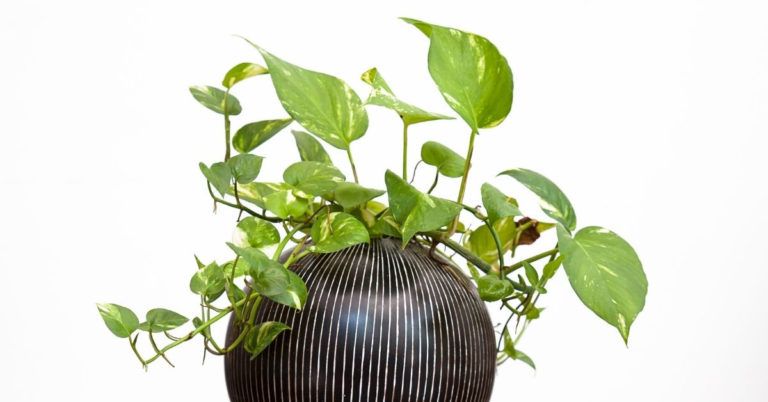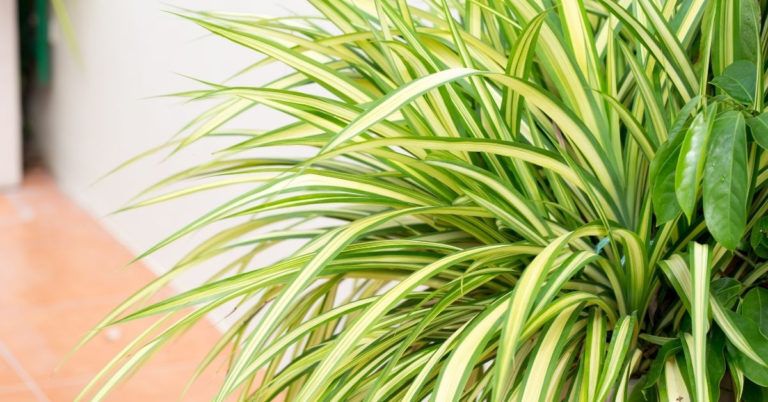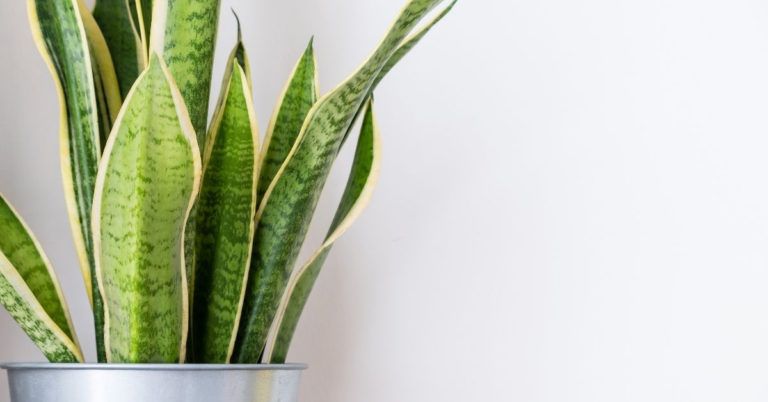Beginner ZZ Plant Care: How to Care for a ZZ Plant
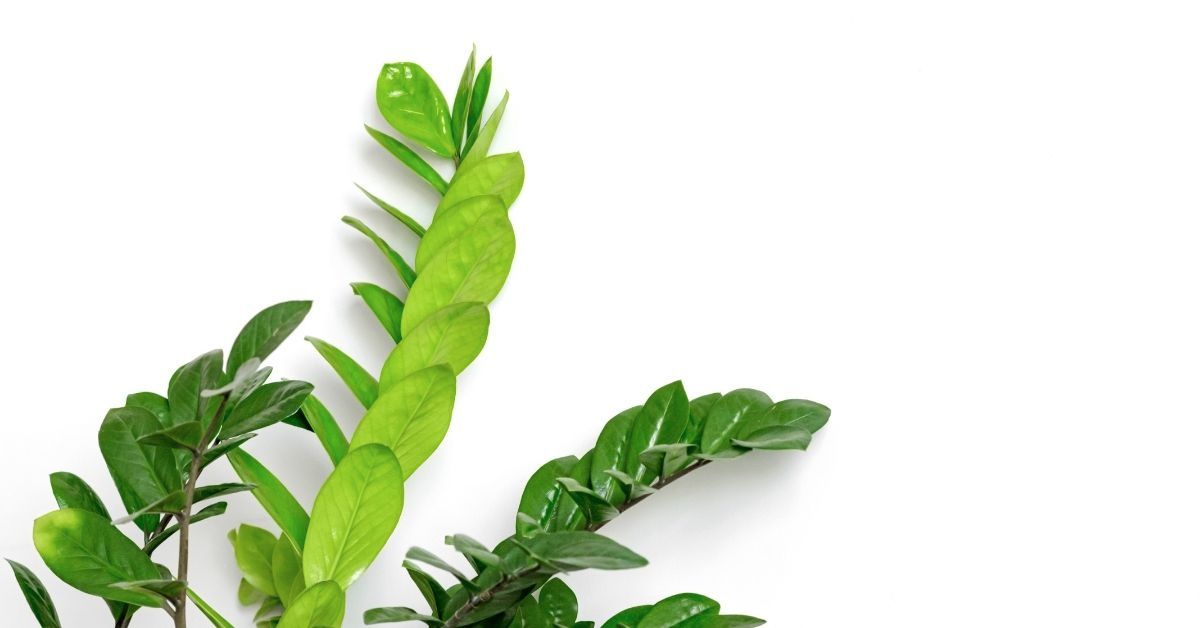
The ZZ plant, also known as Zamioculcas Zamiifolia, is becoming more popular as a houseplant.
This houseplant has become increasingly popular among new plant parents due to its hardiness and adaptability.
In other words: the ZZ plant does not require complicated care and can survive almost everywhere.
However, you need to give the plant some attention to ensure that the bright lime leafy plant thrives.
So, this ZZ plant care will provide you with detailed instructions on how to care for it.
Let’s get started.
About the ZZ Plant
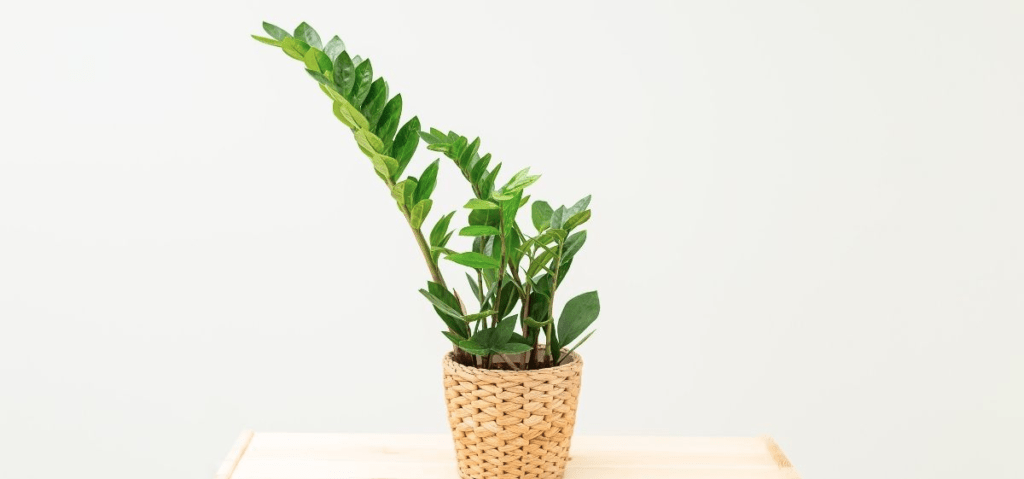
The ZZ plant is a popular tropical perennial leafy plant native to Eastern Africa. It is famous as an indoor plant due to its small size and simplicity.
You can easily differentiate this plant by its shiny, pointy, green leaves.
Another noteworthy feature is the transition from a bright lime color to fascinating emerald green as the plant matures.
You can also identify a ZZ plant from its thick and bulbous stalks. The thick stalks give the plants the ability to cope in low-light or low-water environments.
As a result, the ZZ plant is one of the best houseplants for beginners.
ZZ plant is also an excellent air purifier and can purify the air within a small space.
So, if you want to add more health benefits to your home, then the ZZ plant is a perfect choice for you.
Now that we have got acquainted with this wonderful plant, let’s move on to how to care for it.
How to care for ZZ Plant
The ZZ plant’s beautiful leaves and low maintenance make this plant one of the best indoor plants you can find on the internet.
It is suitable for any home environment due to its ease of care. As a result, many people enjoy having this plant.
Meanwhile, you don’t need to be a botanist to care for a ZZ plant. In fact, you just need to pay attention to a few essential points.
Here’s what you need to know before you start caring for your ZZ plant.
Light
ZZ plant does not require much attention to light conditions. It is highly resistant to a wide range of lighting conditions.
That is why the ZZ plant is ideal for the indoor environment.
The only thing you need to keep in mind is that it still needs some sunlight to grow.
ZZ plant will thrive if you give it bright, indirect sunlight.
If you don’t provide any light to the ZZ plant, the stalks and leaves can become too tall and thin.
At the same time, it is best to keep the ZZ plant inside a room. Direct sunlight can burn and damage the leaves of your ZZ plant.
Soil
Soil balance is critical to the long-term health of a plant.
ZZ plants aren’t fussy about their soil mix, but the right blend can significantly impact their growth.
The ZZ plant thrives in nutrient-rich, porous soil mixtures.
To help with soil aeration and create a well-draining environment, use a pot with good drainage to house a ZZ plant.
You can also mix in some lava rock, perlite, or sand to your soil mixture.
Water
Its thick roots and stalks allow the ZZ plant to be watered sparingly or not at all. There is no need to worry about underwatering it.
However, overwatering can be a problem for this plant.
That is why a good rule of thumb is to only water the ZZ plant once the soil begins to dry out.
In most cases, the tiny plant can live for months without water. So, you can cut back on the amount of water you give the plant.
Don’t forget to drain any excess water from your pot when watering your ZZ plant.
Temperature and Humidity
You don’t want to put your ZZ plant in a place that is too hot or too cold.
Particularly, you don’t want to place the ZZ plant in a cold area below 45 degrees Fahrenheit because it is a tropical plant.
65 to 85 degrees Fahrenheit are the ideal temperatures for a ZZ plant.
ZZ plants can also tolerate a wide range of humidity levels but prefer 40 – 60% indoor humidity levels.
However, it is important to note that excessively high humidity levels can encourage the growth of pests and disease in your ZZ Plant.
Fertilizer
When it comes to fertilizer, ZZ Plants aren’t picky at all.
In fact, fertilizing is unnecessary for a ZZ plant since it can survive quite a harsh environment.
But you can add diluted indoor plant fertilizer to make it healthy during the growing season.
You shouldn’t fertilize your ZZ plants in the late fall or winter because that’s when they’re supposed to be resting.
Salts can build up and burn the roots of your ZZ Plant if you fertilize it too much.
Varieties of ZZ Plant
As I said, many people adore the ZZ plant because of its pretty leaf and ease of care.
There aren’t many different types of ZZ plants available right now.
Even so, new varieties are constantly being cultivated, so we can expect to see many more beautiful and unique ZZ plant varieties in the future.
Here are 5 types of ZZ plants you can easily find on the market today.
The Regular ZZ Plant

This variety of ZZ plants will be the easiest to find at any gardening store. They are also the most common variety of ZZ plants.
You can also find them in nurseries that sell indoor plants.
The regular ZZ plant has a beautiful green color with a glossy shine on its leaf.
If you’re just getting started with houseplants, this is the type you should choose.
Not only they are easy to care for, but the price is also cheaper compared to other types of ZZ plants.
Variegated ZZ Plant
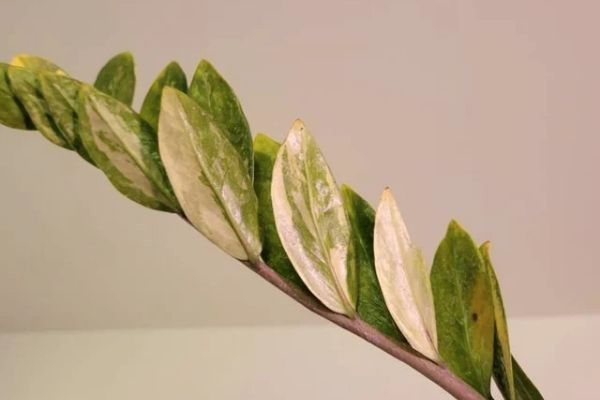
You can identify a variegated ZZ plant by looking at the color of its leaves.
A variegated ZZ plant will have yellow or white shades on the leaves.
This type might be harder to find in your local nurseries, but their care is almost the same as a regular ZZ plant.
You just need to give a variegated ZZ plant a little bit more indirect light due to its color.
The Lucky Classic ZZ Plant

The lucky classic ZZ plant is one of the most popular and beautiful ZZ plants you can find on the market today. It has a unique and instantly recognizable look.
The lucky classic variety has a more rounded leaf compared to most ZZ plants.
It has the same beautiful green leaves, but just the shape of the leaf is a bit different.
Zamicro ZZ Plant
Also known as the Dwarf ZZ Plant, this variant is what you should choose if you don’t have a lot of space in your house.
The Zamicro has exactly the same green waxy leaves as the regular ZZ plant, but it will not grow to be as tall as the regular plant.
This variety also has smaller leaves than a typical ZZ plant.
Raven ZZ Plant

Last but not least, there’s the Raven ZZ Plant.
It is one of the most beautiful houseplants available, not just among ZZ plant varieties.
Unlike most ZZ plants with glossy green leaves, the Raven ZZ Plant has deep dark green leaves that look almost black.
The leaves of the Raven ZZ Plant will definitely give a great first impression to anyone who sees this plant for the first time.
I’ve seen this variety in my local nurseries as well as online stores more these days. So it should not be a problem if you want to get this variety.
However, please remember that the price is somewhat more expensive compared to the regular ZZ plant.
Common ZZ plant problems
Mistakes made in caring for the ZZ plant might make the beautiful green plant look weird and out of place.
Here are some common ZZ plant problems that you might encounter when keeping this plant.
ZZ plant turning yellow
There are so many reasons why a ZZ plant may turn yellow.
It could be due to the sunlight, improper watering, or even too much fertilization.
But one thing you need to keep in mind is that the ZZ plant should never turn yellow, ever.
Firstly, yellow leaves might be caused by too much sunlight exposure.
As discussed above, direct sunlight can burn the leaves and cause the ZZ plant to turn yellow.
So, always make sure to grow your ZZ plant in the shade or just give it indirect sunlight.
Next, yellow leaves can also be caused by too much water. Remember that the ZZ plant needs to be watered well once in a while.
However, too much water will also cause the plant’s leaves to wilt, eventually leading to the leaves turning yellow.
Lastly, yellow leaves can also be caused by the addition of too many nutrients to the plant.
Overfertilizing can cause salt build-up, which can damage the leaves and cause them to turn yellow.
As you see, there are many reasons why a ZZ plant can turn yellow.
Therefore, it is very important that you know how to prevent such problems from happening to your ZZ plant.
ZZ plant leaves drooping
This one is another common ZZ plant problem that you should know about.
You might have noticed your ZZ plant leaves hanging lower than usual.
In my experience, the most common cause for this problem is when you overwater the ZZ plant.
Overwatering can cause your ZZ plant to store too much water on its leaves, and this can eventually lead to the leaves drooping.
So make sure to water the plant only when it needs it and not too much to keep your ZZ plant looking in shape.
But, if you notice that the leaves still droop even after even after you water the ZZ plant properly, then it could be that you need to give the plant more light.
Although the ZZ plant can survive a low-light condition, it will not look as good as a plant grown under direct sunlight.
Therefore, if you think the ZZ plant is growing poorly or its leaves are drooping too much, you should change the position of the plant where it gets lots of indirect sunlight.
How to repot a ZZ plant?
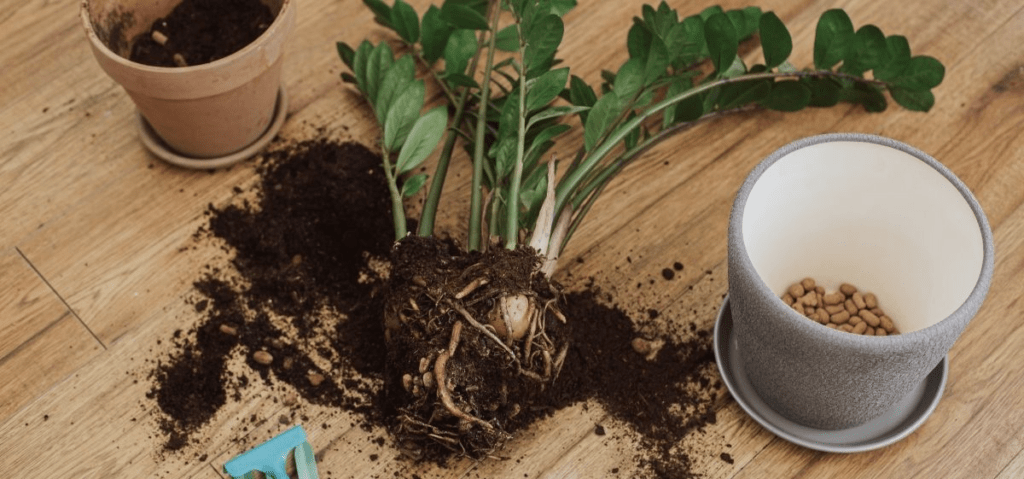
First of all, the ZZ plant is a slow-growing plant that needs to be repotted only once every couple of years.
So you should wait for some time to see if your ZZ plant actually needs to be repotted.
Repotting a ZZ plant is an easy thing to do as well.
Firstly, remove the ZZ plant from its pot and clean the roots to remove any soil that might be stuck on the root.
Then, use a clean cutting tool to cut the root system to separate the old root from the new one.
When cleaning and inspecting the root, look out for root rot or fungal infection that can damage the plant.
Any part of the roots that are mushy, squishy, or smell foul should be cut off and removed.
Now, put the ZZ plant in a bigger pot than the pot it was growing in before. You might want to use a pot with good drainage to help you avoid overwatering your ZZ plant.
You can use a good quality potting mix or mix your own to ensure that the ZZ plant will have a good start in the new pot.
Make sure that you use new potting soil and not old soil, as it might contain salt that will damage your ZZ plant.
All you need to do next is to put the plant back inside and then give the plant under indirect sunlight grow light to let the ZZ plant recover for a few days.
Last but not least, make sure to water your ZZ plant properly to keep it thriving and happy.
Bonus tip: Repot the ZZ plant in spring or summer when the plant is growing inactive state.
How to propagate ZZ Plant?
There are two ways you can go about propagating your ZZ Plant; you can use the stem cutting or the leaf-cutting method.
The stem cutting method is easy and quick to do, but you need to be careful to ensure that the stem cuttings you make have a strong root system.
Plus, the stem cutting method will give you faster results. On the other hand, the leaf-cutting process is more challenging, but it allows you to grow ZZ plants in small batches.
If you’re planning to propagate your ZZ Plant, then you should take a look at this excellent video tutorial on how to propagate ZZ plants using both of the methods I’ve mentioned above.
FAQs about ZZ Plant Care
Taking care of a ZZ plant is very easy. You just need to know the right things to do to ensure that your ZZ plant grows happy and healthy.
Here are some of the questions new ZZ plant parents have asked me in the past:
How often do you water ZZ plants?
A ZZ plant does not need much water. With that being said, you need to keep an eye on your ZZ plant and ensure that it is getting enough water to thrive and grow properly.
Some experts believe that you should water your ZZ plant once every 2 to 3 weeks.
But based on my experience, it is better to water your ZZ plant when its potting soil starts to dry up.
You can use your finger or a moisture meter to check the moisture level of your ZZ plant’s potting mix.
Once the soil is dry, you can give your ZZ plant a good watering to rehydrate it.
Will yellow ZZ leaves turn green again?
No, in most cases, yellow ZZ leaves will not turn green again no matter what you do.
When you notice some yellow leaves, the best thing you can do is to cut them off and throw them away.
Yellow leaves on your ZZ plant might hinder some growth in your ZZ plant.
Don’t worry, though, because new leaves will grow to replace the ones that you removed.
How big does a ZZ plant get?
Depending on the light, water, and variation, the ZZ plant may grow to be three to four feet tall and three feet broad.
One thing you need to remember, however, is that the ZZ plant is a slow-growing plant.
So, it will take some time for your ZZ plant to reach its full size.
The best thing you can do is to give your ZZ plant plenty of space so that it can spread out and grow big.
If you want to make your ZZ plant grow faster, make sure the plant is in an ideal environment and gives it all the nutrients it needs to grow bigger and healthier.
Final Words
ZZ plant is a great houseplant that can easily survive in any home.
It has a fascinating look, and it is one of the easiest house plants to grow.
If you’re looking to add something unique to your houseplant collection, then the ZZ plant is definitely a great option to consider.
I hope this beginner ZZ plant care guide can help you make sure that your ZZ plant grows healthy and happy.
If you have more questions about the ZZ plant, please let me know in the comment section below, and I will try my best to answer your questions.
Also, check out our Houseplant 101 page for some great tips and tricks on how to take care of different kinds of houseplants.
And if you like this article, please don’t forget to share it with your friends!
Thanks for reading, and Happy Planting!
